 Max Anderson
Max AndersonTwo wildlife charities are recruiting volunteers to help spot glow-in-the-dark caterpillars at night using ultraviolet lights.
It is hoped the technique will make surveying butterflies and moths quicker and reveal secrets about their behaviour and evolution.
The surveys are part of a conservation project covering Bernwood Forest, the River Ray and Otmoor Basin near Oxford.
A conservation manager for the Dorset-based Butterfly Conservation, Steven Lofting, said the new method “has the potential to change our understanding of their biology, distribution, abundance and ecology. It’s really exciting.”
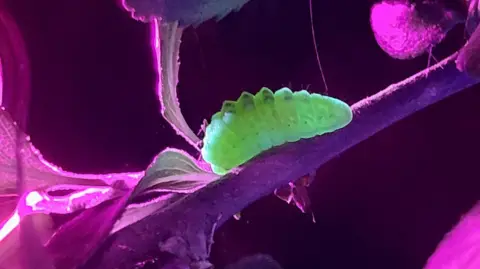 Geoff Sutton
Geoff SuttonTraining in the technique is part of a project led by the Berkshire, Buckinghamshire & Oxfordshire Wildlife Trust (BBOWT), which has been given £512,182 from The National Lottery Heritage Fund.
The first group of volunteers were trained at the Trust’s Finemere Wood nature reserve between Bicester and Aylesbury.
They were looking for caterpillars of the UK’s five species of hairstreak butterfly.
The black hairstreak is endangered, the brown hairstreak and white-letter hairstreak are both vulnerable, and green hairstreak and purple hairstreak have also declined in abundance and distribution since the 1970s.
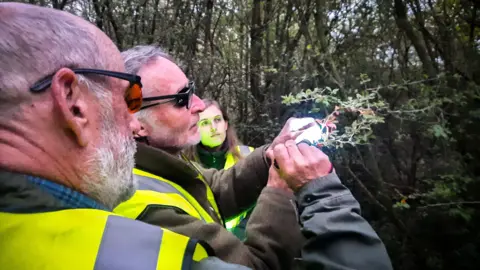 Pete Hughes
Pete HughesBBOWT will now apply for a total of £3.6m for the Reconnecting Bernwood, Otmoor and the Ray project, of which Butterfly Conservation is a key partner.
The scheme involves working with communities, farmers and landowners to restore habitats for threatened species on the Oxfordshire-Buckinghamshire border.
Emily Coulam, from the trust, said the data gathered by the volunteers would help them “develop projects which hope to increase abundance and range of the hairstreak butterflies through habitat creation and restoration”.
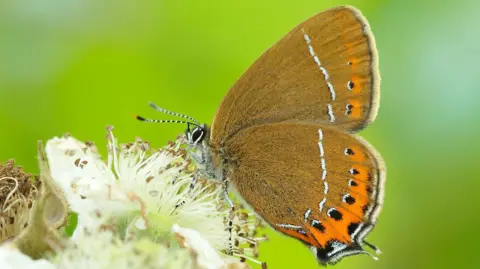 Iain H Leach
Iain H LeachButterfly Conservation and BBOWT have surveyed hairstreaks for decades, but the techniques have been slow and painstaking.
For the brown hairstreak, both charities rely on volunteers going out in the middle of winter to look for tiny, pinhead-sized eggs on twigs using magnifying glasses.
Mr Lofting said: “If we can just shine a light in the bushes and these caterpillars suddenly glow at us like an electric lightbulb, it could make it so much easier and quicker to do surveys of these species.”
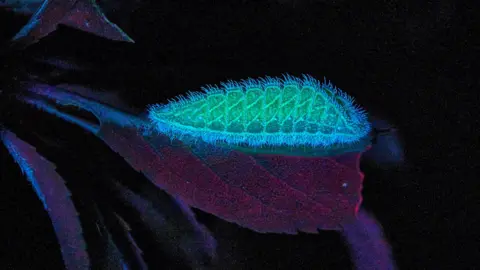 Max Anderson
Max AndersonSurveys of butterflies are important for conservation because they are known as indicator species, meaning rises and falls in their populations can predict the health of the wider ecosystem.
Official figures from the UK Butterfly Monitoring Scheme revealed 2024 was the fifth worst year for UK butterflies since the scheme began in 1976.
More than half of the UK’s butterfly species have populations in long-term decline, a survey has found.
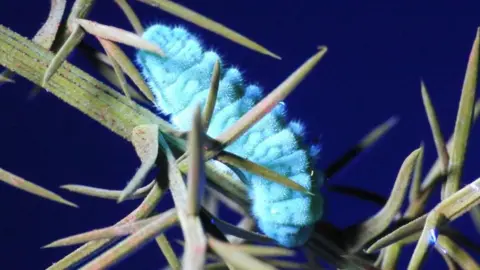 Gareth Tilley
Gareth Tilley
